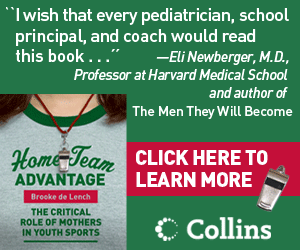If you are having trouble finding a high carbohydrate, low fat item on the menu, remember that most restaurants are willing to accommodate special requests, such as:
- Low-fat or non fat condiments
- Smaller portions
- Steamed vegetables
- Dressing on the side
- Changes in preparation (broiled versus fried, for instance).
If you can't arrange for meals ahead of time, you and your players can often get a pretty good idea about whether a menu item is high fat from the method of preparation:
- High Fat Methods:
- Fried
- Crispy
- Breaded
- Scampi-style
- Creamed
- Buttery
- Au gratin
- With gravy
- Low Fat Methods:
- Steamed
- Broiled
- Boiled
- Charbroiled
- Poached
- Marinara
- Tomato sauce
- Au juice/in its own juice
Grocery and Convenience Stores
At all day events or tournaments, stopping at a grocery or convenience store is usually a better bet than the concession stand, which typically offers foods that are high in fat, (e.g. nacho chips, cheese fries, and hot dogs) and are expensive. Most supermarkets have a soup and salad bar with a variety of healthy foods. With guidance from parents and coaches, young athletes can find high carbohydrate, low fat foods in every aisle of the store.
As a general rule, a snack that contains at least 4 grams of carbohydrate for every gram of fat is considered high in carbohydrates and low in fat. For more information on specific foods, read the label.
Click here for some healthy -- and not so healthy -- choices from the grocery or convenience store.
Final Tips
- Provide guidelines. Giving athletes easy-to-use food guidelines will help them pick food from almost any menu or food aisle that will ensure that they continue eating on the road the kind of high carbohydrate, moderate protein, and low fat diet that supplies the calories and nutrients they need to perform at their best.
- Follow through. It takes planning and practice to find nutritious foods at fast-food restaurants, family-style restaurants, and grocery stores, but it can be done!
- Practice what you preach. Remember that your child learns eating habits from you. Be sure to select healthy food items for yourself.
- Encourage and remind. Taking the time to educate your child athlete about making wise food choices, combined with periodic reminders and encouragement throughout the season, will go along way in helping assure adequate energy and carbohydrate intake for growth, training, and competition.
- Let kids be kids. An occasional ice cream cone, candy bar or bag of chips won't hurt, as long as these less nutritious items are in addition to, not in place of, the high-performance foods.
1.Thomas M, Nelso TF, Harwood E, Neumark-Sztainer D. Exploring Parent Perceptions of the Food Environment in Youth Sport.
Journal of Nutrition Education and Behavior. 2012;44(4):365-371.
Revised June 21, 2012









